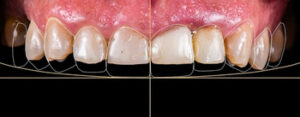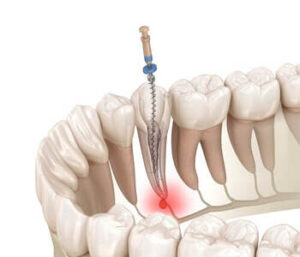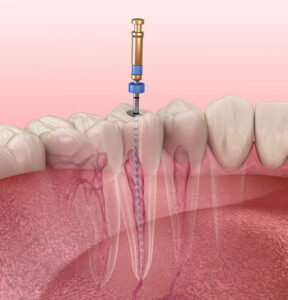Root canal treatment can feel daunting if you’ve never undergone it. However, understanding the process, what happens before and after, and the benefits of saving your natural tooth can ease your concerns. This guide explores every stage of a root canal procedure, from identifying an infected tooth to enjoying a smooth smile post-treatment.
What Is a Root Canal, and Why Do You Need One?
A root canal is a dental approach designed to treat an infected tooth pulp or deep decay that affects the root structure of a tooth. When the soft tissue inside the pulp chamber becomes inflamed or infected, it can lead to ongoing tooth pain, swollen gums, and even bone loss if left untreated.
Here are some signs you might need a root canal:
- Severe pain when chewing or biting.
- Sensitivity to hot or cold temperatures that lingers.
- Swollen gums around the affected tooth.
- A loose tooth or darkening of the white enamel.
Overlooking these signs may allow the infection to spread to nearby teeth or tissues, resulting in more serious dental issues.
The Root Canal Procedure Explained
Undergoing a root canal procedure can feel overwhelming if you’re unsure what to expect. However, understanding each step of the process can make it far less intimidating. This dental treatment is designed to alleviate severe pain, preserve your natural tooth, and protect the root structure from further damage. Let’s break down what happens during a root canal, from the initial diagnosis to the final restoration, so you can approach your appointment with confidence and peace of mind.
Step 1: Before the Root Canal

To ensure you feel comfortable, a local anaesthetic or local anaesthesia will be applied to numb the area. A rubber dam (a small latex sheet) will be fitted around the tooth to keep it dry during the procedure.
Step 2: During the Procedure
The root canal process typically involves these steps:
- Accessing the pulp chamber: The dentist creates a small opening in the tooth to reach the pulp inside.
- Removing infected pulp: The dentist removes the infected tooth pulp, which includes nerves, blood vessels, and connective tissues.
- Cleaning the canals: The root canal system is cleaned and shaped to prepare for filling.
- Filling the canals: The cleaned canals are filled with gutta-percha, a flexible, rubber-like material, and sealed with a temporary filling to protect the tooth.
This step ensures that no bacteria remain inside, preventing further damage or reinfection.
Step 3: After the Root Canal
Post-procedure, you might feel some discomfort, but most patients find that it’s manageable with pain relief and resolves within a few hours. The root canal recovery period generally involves:
- Avoiding hard foods and sticking to soft foods like mashed potatoes for the first few weeks.
- Using over-the-counter pain medication if needed.
- Practising good oral hygiene to keep the area clean and promote healing.
- Have a follow-up appointment to place a permanent filling or dental crown.
- Schedule regular dental checkups to keep an eye on your oral health.
A root canal is just the first step in restoring your smile. By taking these precautions, you’ll ensure that your root canal system remains infection-free and your smile stays bright.
Nutritional Advice During Recovery
To support healing, stick to these soft foods:
- Soups and broths.
- Smoothies packed with fruits and vegetables.
- Scrambled eggs and soft-cooked proteins.
Avoid hard foods or anything that could disturb the temporary filling or healing process.
Transforming Your Smile: Before and After a Root Canal
A root canal can do more than just relieve pain—it can completely transform the health and appearance of your smile. Addressing the infection and restoring your tooth eliminates discomfort while preserving your natural tooth structure. Let’s explore the dramatic changes a root canal can bring, from alleviating symptoms to restoring full functionality.
 Before a Root Canal
Before a Root Canal
A decayed tooth or infected pulp can lead to:
- Severe pain and sensitivity.
- Swelling and infection spread to surrounding structures.
- Complications like abscesses or bone loss.
After a Root Canal
Following a successful root canal treatment, you can expect:
- Relief from tooth pain.
- Preservation of your natural tooth, avoiding extraction.
- A restored tooth that functions like any other, often capped with an artificial crown for added strength.
Why Saving Your Natural Tooth Matters
While extraction might seem like an easier option, preserving your natural tooth has numerous benefits:
- Maintains the integrity of your root structure and alignment of other teeth.
- Prevents the need for costly replacements like implants or bridges.
- Allows you to chew and speak naturally.
A treated tooth can endure a lifetime with proper care, including regular dental checkups and avoiding habits like chewing chewy foods or hard foods.
The Importance of Early Diagnosis
When it comes to dental health, time is of the essence. An infected tooth doesn’t heal itself, and delaying treatment can cause severe complications, such as abscesses, bone loss, and even systemic infections. These issues can jeopardise not just your oral health but also your overall well-being.
Early diagnosis is key to addressing symptoms like severe pain, sensitivity, or swollen gums. Regular visits to your dentist can help detect signs of an infected pulp or deep decay early, allowing for less invasive treatments and preserving your natural tooth.
Comparing Root Canals to Other Treatments
When faced with an infected tooth, patients often consider two primary options: root canal therapy or tooth extraction.
- Root Canal Treatment: This procedure saves the natural tooth by removing the infected pulp, thoroughly cleaning the canals, and sealing the tooth. It preserves the tooth’s functionality, prevents shifting of other teeth, and is often more cost-effective in the long run when compared to replacement options.
- Tooth Extraction: While simpler initially, extraction requires additional procedures like implants, bridges, or dentures to replace the lost tooth, which can be more invasive and expensive. It can also affect your bite and alignment.
A root canal offers the advantage of maintaining the tooth’s root structure, which is essential for chewing, speaking, and preventing bone loss in the jaw.
Root Canal vs. Extraction: What’s Right for You?
Deciding between a root canal and extraction involves considering several factors, including:
- Condition of the Tooth: If the root structure is healthy and the infected pulp can be removed, a root canal is preferable.
- Patient Goals: Those who prioritise preserving their natural tooth often choose a root canal.
- Cost and Recovery Time: While extraction may seem cheaper upfront, replacing the tooth with an implant or bridge can be significantly more expensive.
Ultimately, consulting with your dentist is crucial for determining the best course of action.
Myths About Root Canals Debunked
Many people hesitate to undergo a root canal procedure due to widespread misconceptions. Let’s address some of the most common myths:
“Root canals are painful.”
- With modern technology and local anaesthetic, most patients report little to no discomfort during the procedure. The relief from tooth pain often outweighs any mild discomfort.
“The tooth becomes dead.”
- While the tooth pulp tissue is removed, the treated tooth remains functional and alive, thanks to the surrounding blood vessels and tissues.
“Root canals don’t last.”
- When paired with a dental crown and proper care, most root canals last a lifetime.
Root Canal Success Rates
Thanks to modern advances in dental procedures, the success rate of most root canals is over 95%. With proper care, a root canal system remains infection-free, and the treated tooth can function like any other. Studies have shown that teeth saved through root canal therapy often last as long as or longer than implants.
Signs You Might Need a Follow-Up
Sometimes, additional treatment may be necessary. Look out for these signs:
- Persistent or recurring pain.
- Swelling or sensitivity near the affected tooth.
- Cracking or damage to the permanent filling or dental crown.
Early intervention prevents further damage and ensures the longevity of your dental treatment.
The Role of Dental Crowns After a Root Canal
A dental crown is usually recommended after a root canal procedure for several reasons:
- Protection: Shields the tooth from chewy foods, fractures, or cracks.
- Restoration: Replaces lost enamel and restores the tooth’s natural appearance.
- Longevity: A crown enhances the durability of the treated tooth, allowing you to chew, speak, and smile confidently.
The placement of an artificial crown ensures the integrity of the root structure, preventing future dental problems.
Root Canal Alternatives for Front Teeth
Front teeth often have simpler canal structures, making them easier to treat. However, when a root canal is not viable, options like resin fillings or extraction followed by implants may be considered. Preservation remains the priority wherever possible.
Common Concerns: Your Root Canal Questions Answered
If you’re considering a root canal or have been advised to get one, you likely have questions about the procedure, recovery, and what to expect. To help ease your concerns, we’ve compiled answers to some of the most frequently asked questions about root canals. Let’s clear up any confusion and guide you toward a healthier smile.
Does the Procedure Hurt?
Thanks to modern dental procedures and the use of local anaesthetic, most patients experience pain only during the initial infection phase. The procedure itself is tolerable, and the pain relief afterwards is almost immediate.
What Happens If I Don’t Get a Root Canal?
Leaving an infected tooth without treatment can result in:
- Spreading of the infection to surrounding structures.
- Loss of the affected tooth and damage to other teeth.
- More invasive and expensive treatments in the future.
Can I Eat Normally After a Root Canal?
You’ll need to avoid chewing on the treated tooth and stick to soft foods during recovery. Once a permanent filling or dental crown is placed, you can resume normal activities and enjoy your favourite foods again.
How long does a root canal procedure usually take?
The duration of a root canal depends on the tooth being treated and the complexity of the case. On average, it can take between 60 to 90 minutes. In some instances, multiple visits may be required, especially if the tooth has multiple canals or if the infection is severe.
Is it normal to feel pain after a root canal?
Mild discomfort or tenderness around the treated tooth is common for a few days after the procedure. This is due to tissue inflammation and should subside with over-the-counter pain relief. If the pain persists or worsens, consult your dentist.
Do all teeth need a crown after a root canal?
Not all teeth require crowns. While molars and premolars often need crowns due to their role in chewing, front teeth may only require a permanent filling if they are not under excessive stress. Your dentist will advise based on the tooth’s location and function.
Can a root canal fail?
While rare, root canal failure can occur if bacteria re-enter the tooth due to an incomplete seal, a fracture, or untreated canals. Regular dental checkups and prompt care for any unusual symptoms reduce the likelihood of failure.
Is there an age limit for getting a root canal?
Root canal treatment is suitable for patients of all ages as long as the tooth can be restored and its root structure is intact.
Can I exercise after a root canal?
It’s recommended to avoid strenuous activity on the day of your root canal to allow your body to recover. You can resume light activities and normal routines after a few hours, depending on how you feel.
How can I ensure my treated tooth stays healthy long-term?
Maintaining the health of your treated tooth involves regular brushing, flossing, and dental checkups. Avoid habits like chewing ice or using teeth as tools to prevent cracking the restoration.
Is a root canal always the best option for an infected tooth?
While root canals are highly effective in preserving natural teeth, they may not be suitable if the tooth’s structure is severely compromised. Your dentist may recommend alternative options like extractions with replacements in such cases.
Can Root Canals Prevent Tooth Loss?
By treating the infected pulp and saving the natural tooth, a root canal helps maintain oral health and prevents a domino effect of losing other teeth due to misalignment or shifting.
Wrapping It Up: What You Need to Know

If you’re experiencing ongoing tooth pain, don’t wait. Contact Dental 266 at 02 9051 0600 for an evaluation and take the first step toward lasting relief and a healthier smile.
Note: Any surgical or invasive procedure carries risks. Before proceeding, you should seek a second opinion from an appropriately qualified health practitioner.
References:
American Association of Endodontists. (n.d.). What is a root canal? Retrieved from https://www.aae.org/patients/root-canal-treatment/what-is-a-root-canal/
Mayo Clinic. (n.d.). Cavities: Symptoms and causes. Retrieved from https://www.mayoclinic.org/diseases-conditions/cavities/symptoms-causes/syc-20352892
Forbes Health. (n.d.). How much do dental implants cost? Retrieved from https://www.forbes.com/health/dental/how-much-dental-implants-cost/
Cleveland Clinic. (n.d.). Dental crowns. Retrieved from https://my.clevelandclinic.org/health/treatments/10923-dental-crowns
Colgate. (n.d.). What is good oral hygiene? Retrieved from https://www.colgate.com/en-us/oral-health/adult-oral-care/what-is-good-oral-hygiene
Hosseini, N., Sedghizadeh, P. P., & Torabinejad, M. (2023). Longevity of endodontically treated teeth versus dental implants: A retrospective analysis. Clinical Oral Investigations. https://doi.org/10.1007/s00784-023-04938-y


 Before a Root Canal
Before a Root Canal



